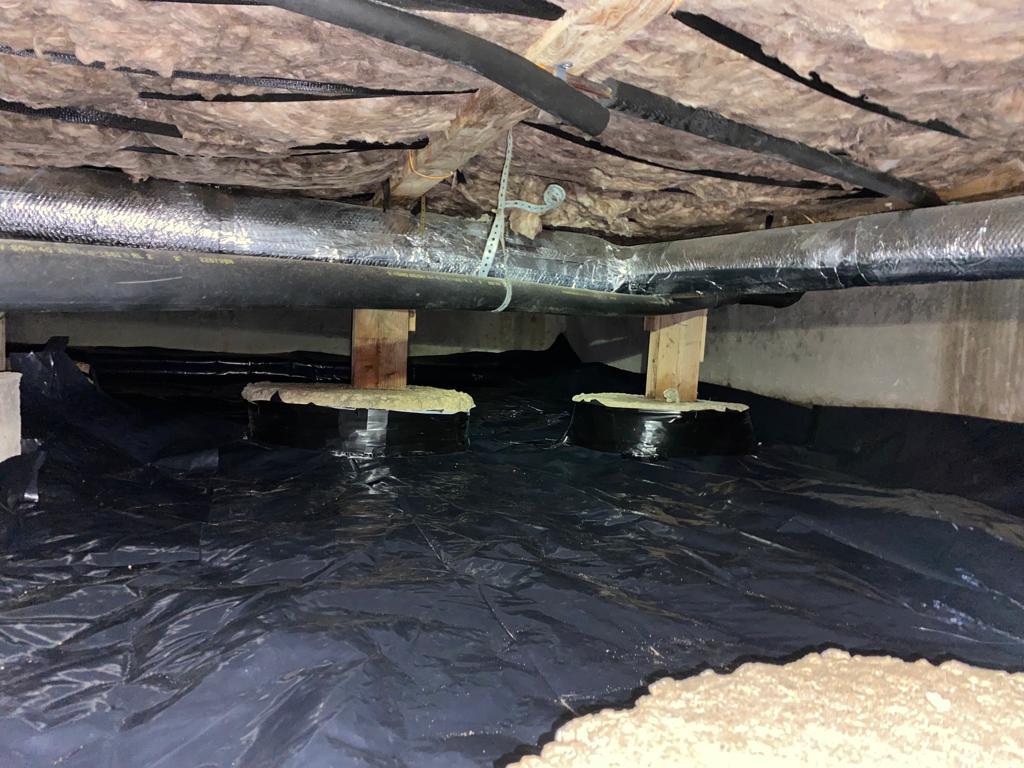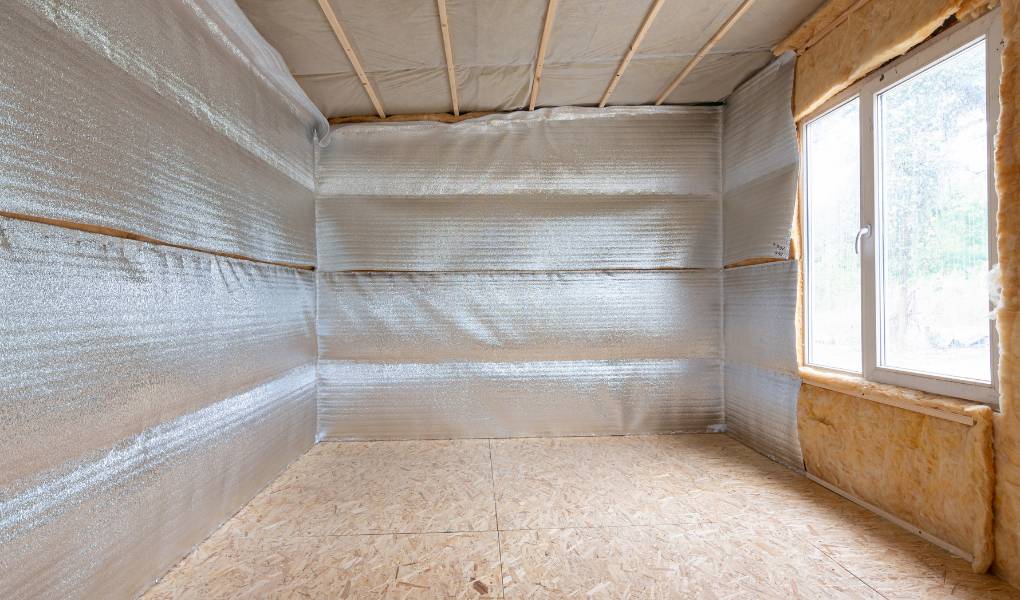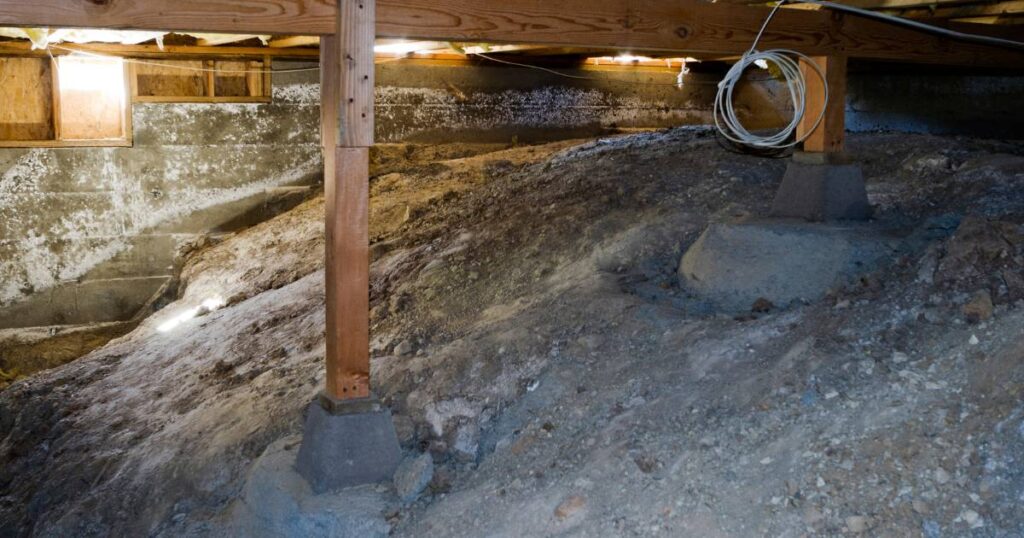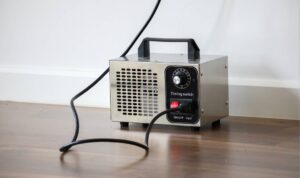Crawl space encapsulation cost can be influenced by several factors, including square footage, wall height, presence of mold or fungal growth, condition of insulation, and existing debris. The larger the crawl space encapsulation project and the higher the walls, the more materials and labor will be required, thus increasing the cost. Additionally, addressing mold or fungal growth, replacing or adding insulation, and removing existing debris can also impact the overall cost of encapsulation.
The range of costs for crawl space encapsulation can vary significantly, typically falling between $3,000 and $15,000. However, it’s important to note that each home’s needs are unique, and a tailored solution should be provided for the best results. Factors such as the severity of existing issues, the specific layout of the crawl space, and any additional requirements will all contribute to the final cost. Therefore, it’s crucial to have a professional assess the crawl space and provide a customized quote based on the specific needs of the home. In conclusion, crawl space encapsulation costs can vary widely, and a personalized approach is essential to ensure an effective and long-lasting solution.
What is Crawl Space Encapsulation?
Crawl space encapsulation is a process that involves sealing off the crawl space beneath a home to prevent moisture, mold, and pests from entering the space. This technique helps to improve the overall air quality in the home and can also lead to energy savings by creating a more efficient environment. Encapsulation typically involves using a heavy-duty plastic barrier to cover the floor, walls, and sometimes even the ceiling of the crawl space to create a completely sealed environment. This process can also include adding a dehumidifier and sealing off all vents and openings to ensure that the space remains dry and protected. Crawl space encapsulation is an effective way to protect homes from the damaging effects of moisture and can lead to a healthier, more energy-efficient living environment.

Benefits of Crawl Space Encapsulation
Crawl space encapsulation provides numerous benefits for homeowners. By sealing off the crawl space, it can greatly improve air quality by preventing moisture, dust, and other pollutants from entering the home. This can lead to a more comfortable living environment and reduce the risk of respiratory issues.
- Encapsulation also helps in pest prevention by eliminating entry points for insects and rodents. It prevents mold and mildew growth by controlling moisture levels, which can contribute to better air quality and reduce the risk of structural damage.
- Furthermore, encapsulation can prevent foundation shifting by stabilizing the soil beneath the home and reducing the risk of structural damage. It also protects against radon gas exposure, a naturally occurring radioactive gas that can seep into homes through the ground. By sealing off the crawl space, it prevents radon from entering the home and posing health risks to the occupants.
- In terms of cost savings, encapsulation can help lower energy bills by reducing the need for heating and cooling. By keeping the crawl space properly insulated and moisture-free, it can lead to more efficient HVAC systems and lower energy consumption.
Overall, crawl space encapsulation offers a range of benefits including improved air quality, comfort, pest prevention, mold prevention, prevention of foundation shifting, radon gas exposure, and energy savings.
Factors Affecting Cost
There are several factors that can impact the cost of a product or service. Understanding these factors can help businesses make informed decisions about pricing and budgeting. From production and labor costs to market demand and supply chain disruptions, the following headings will delve into the various elements that can affect the overall cost of a business. By examining these factors, businesses can better understand the complexities of pricing and work towards optimizing their financial strategies.
Size of the Crawl Space
The square footage of your crawl space is an important factor in determining the size and condition of the area. It is crucial to measure the space accurately to get a more precise estimate for materials and labor costs.
To determine the size of your crawl space, measure the length and width of the area and multiply the two measurements together. For example, if your crawl space is 20 feet long and 15 feet wide, the square footage would be 300 square feet.
Knowing the square footage of your crawl space is essential when estimating materials and labor costs for any work that needs to be done in the area. For example, if you are considering encapsulating or insulating the crawl space, having an accurate measurement will give you a more precise estimate for the amount of materials needed, as well as the labor costs involved.
In conclusion, knowing the size of your crawl space in square footage is crucial for determining the materials and labor costs involved in any maintenance or improvement projects. Taking accurate measurements will ensure that you have a more accurate estimate for any work that needs to be done in the crawl space.

Type of Material Used
Encapsulation systems utilize a variety of materials to create a moisture-controlled environment in crawl spaces. This includes dehumidifiers, which help maintain optimal humidity levels, ductwork to ensure proper air circulation, insulation to regulate temperature, and sump pumps for water removal. Vapor barriers are also essential to prevent moisture from seeping into the crawl space. Vent covers are used to seal off open vents, which can allow moisture, pests, and outdoor air to enter the space.
The cost of materials for encapsulation can vary, but they typically make up a significant portion of the total encapsulation cost. Additionally, additional waterproofing solutions such as drainage systems and foundation repairs may be necessary to further protect the crawl space from moisture intrusion.
Sealing open vents is crucial to maintaining a controlled environment in the crawl space. Open vents can allow for increased humidity, which can lead to mold, mildew, and structural damage. By sealing the vents, the crawl space can be properly encapsulated and protected from moisture-related issues. Overall, the materials used in encapsulation systems play a vital role in creating a dry, clean, and energy-efficient crawl space.

Labor Costs
Labor costs for crawl space encapsulation can be influenced by several factors. The hourly rate of local waterproofing contractors is a significant factor, with rates varying depending on the region and the complexity of the job. Additionally, the materials required for installation, such as vapor barriers, insulation, and sealing products, contribute to the overall cost. The time needed for the installation process also affects labor costs, as more intricate work or larger crawl spaces may require more time and manpower.
Furthermore, free inspections or permits may be necessary before the encapsulation process can begin, adding to the labor costs. Factors such as the need for additional solutions like vent sealing or other waterproofing measures can also increase labor expenses.
When considering additional costs, vent sealing and other waterproofing solutions are essential to prevent moisture problems in crawl spaces. Vent sealing involves closing off outside air vents to prevent moisture from entering the crawl space, while other waterproofing solutions such as sump pump installation or drainage systems may also be necessary to address water issues. These additional measures add to the overall labor costs of crawl space encapsulation.
In conclusion, labor costs for crawl space encapsulation are influenced by the hourly rate of contractors, installation materials, time required for the job, inspections or permits, and any additional waterproofing solutions needed.
Additional Considerations
Additional considerations for encapsulating a crawl space include addressing any existing insect or rodent infestations and addressing any mold growth. Prior to encapsulation, these issues must be thoroughly treated and removed to prevent future problems within the encapsulated space.
The final cost of the project may be impacted by the types and extent of these issues, as more extensive treatments and remediation may be necessary. Insect and rodent infestations may require extermination services, while mold growth may necessitate mold remediation and moisture control measures.
In addition, additional considerations such as insulation, drainage systems, and sump pump installation may impact the final cost of the project. These considerations may not be applicable to every encapsulated crawl space, but they are important to address if moisture control and overall crawl space health are concerns. It is important to consider these factors when budgeting for an encapsulation project.
Average Cost by Square Foot
Introduction: Understanding the average cost by square foot is essential for anyone considering construction or renovation projects. This metric provides a clear insight into the expected expenses for building or renovating a property, helping individuals and businesses make informed decisions on budgets and project feasibility.
Average Cost by Square Foot:
The average cost per square foot is a popular way to gauge the cost of construction or renovation projects. It takes into account the total project cost and divides it by the total square footage of the property, providing an easy comparison tool for different projects. This metric is commonly used in the real estate industry to determine property values and in the construction industry to estimate project costs. Factors that can influence the average cost by square foot include the type of construction, materials used, location, labor costs, and project complexities. For individuals and businesses, understanding the average cost by square foot is crucial in making realistic budget projections and evaluating potential returns on investment for construction or renovation projects.
Unfinished Crawl Spaces
Unfinished crawl spaces can lead to a variety of problems including mold, pests, and structural issues. Without proper insulation and ventilation, moisture can build up in the crawl space, leading to mold growth which can impact indoor air quality and pose health risks. Additionally, unfinished crawl spaces can become a haven for pests such as rodents and insects, causing potential damage to the property’s structure.
Leaving a crawl space unfinished can result in costly repairs such as mold removal and wood rot, as well as increased energy bills due to poor insulation. The risks of leaving a crawl space unfinished far outweigh the upfront costs of finishing it.
Finishing a crawl space can bring a host of benefits including improved property appeal, energy savings, and better indoor air quality. Properly finishing and insulating the crawl space can also prevent moisture-related issues and structural damage, ultimately saving homeowners money in the long run. Considering the potential risks and costs of leaving a crawl space unfinished, taking steps to finish and maintain it should be a priority for homeowners.

Finished Crawl Spaces
A finished crawl space offers a range of benefits for homeowners. Firstly, it enhances the overall property appeal by providing a clean and organized space that can be used for storage or other purposes. This can be particularly appealing to potential buyers if you decide to sell your property in the future. Additionally, a finished crawl space can lead to energy savings by improving insulation and reducing heat loss, ultimately decreasing utility bills. Furthermore, it can prevent costly repairs by keeping moisture and pests out, which can otherwise lead to structural damage and health issues.
When it comes to the impact of crawl space size on the cost of finishing, larger crawl spaces will naturally require more materials, labor, and time, resulting in higher costs. For example, a small crawl space of around 100 to 200 square feet may cost between $1,500 to $4,000 to finish, while a larger crawl space of 500 square feet or more could range from $5,000 to $10,000 or more.
In conclusion, finishing a crawl space can have a significant positive impact on a property, including increased appeal, energy efficiency, and financial savings. The cost of finishing will depend on the size of the crawl space, and it’s important for homeowners to consider these factors when planning the project.
FAQs About Crawl Space Encapsulation
Are you considering crawl space encapsulation for your home but have some burning questions about the process? Look no further! In the following headings, we will address some of the most frequently asked questions about crawl space encapsulation, giving you the information you need to make an informed decision about this important aspect of home maintenance. Whether you’re concerned about the cost, the benefits, or the potential drawbacks, we’ve got you covered with answers to the most common queries about crawl space encapsulation.
Is crawl space encapsulation worth the cost?
Crawl space encapsulation has several potential benefits, including improved energy efficiency, better moisture control, and reduced home maintenance. By sealing the crawl space with a vapor barrier, encapsulation can prevent moisture and pests from entering the home, leading to a drier, healthier indoor environment. This can also result in lower energy bills, as the encapsulation helps to maintain a more consistent temperature in the home. you can even use your crawl space as a storage room.
However, crawl space encapsulation also comes with drawbacks, such as the significant cost involved in installation. The upfront expenses for materials and labor can be substantial, making it a less feasible option for some homeowners. In addition, there are alternative options for moisture control and energy efficiency, such as proper ventilation and insulation. These alternatives may be more cost-effective for some individuals.
Ultimately, the decision to encapsulate a crawl space should take into account the specific needs of the home and the budget of the homeowner. Encapsulation may be the best choice for homes in particularly moist climates or with pre-existing moisture issues. It can also be worth the cost for homeowners who prioritize energy efficiency and indoor air quality. Proper cost evaluation and consideration of alternative options can help determine if crawl space encapsulation is the right choice for a particular home.
What is the durability period of crawl space encapsulation?
The lifespan of crawl space encapsulation can be influenced by several factors, including proper installation, maintenance, and periodic inspections. Proper installation by trained professionals using high-quality products is essential for ensuring the longevity of the encapsulation. Additionally, regular maintenance and periodic inspections are necessary to identify any issues or wear and tear that may affect the performance and lifespan of the encapsulation.
Choosing high-quality products is crucial for the effectiveness and durability of the encapsulation. Worn-out components should be replaced promptly to maintain the integrity of the encapsulation system.
To maintain an encapsulated crawl space and ensure its longevity, homeowners should follow a few steps. These include regularly checking for signs of moisture or damage, keeping the area clean and free of debris, ensuring proper ventilation, and addressing any issues promptly.
In conclusion, the lifespan of crawl space encapsulation depends on proper installation, regular maintenance, and the quality of the products used. By taking the necessary steps to maintain the encapsulation, homeowners can ensure its effectiveness and longevity.
How does encapsulating a crawl space safeguard the home’s foundation and overall structure?
Crawl space encapsulation significantly protects the foundation and structure of a home by making crucial improvements to drainage, erosion protection, and support of the crawl space walls. Encapsulation involves sealing the crawl space with a vapor barrier to prevent moisture build-up, which can lead to foundation damage and structural instability. Additionally, encapsulation includes installing proper drainage systems to redirect water away from the foundation, preventing erosion and soil displacement.
Moreover, encapsulation helps prevent bowing, cracking, and damage caused by shifting soil by providing additional support to the crawl space walls. This extra support ensures that the foundation remains stable and can withstand the pressure from shifting soil. Overall, crawl space encapsulation plays a critical role in protecting the foundation and structure of the home by addressing moisture issues, improving drainage, preventing erosion, and providing support to the crawl space walls. These measures ultimately contribute to the long-term stability and integrity of the home.
How does crawl space encapsulation prevent mold, mildew, and pests?
Crawl space encapsulation prevents mold, mildew, and pests by sealing off the space from outside elements and regulating ventilation. The process involves using a durable moisture barrier to cover the floors and walls of the crawl space, as well as sealing off any vents and gaps to prevent outside air and moisture from entering. Additionally, a dehumidifier or proper ventilation system is installed to regulate the humidity levels and prevent standing water from accumulating.
By sealing off the crawl space and regulating ventilation, the humidity levels are kept in check, making it less conducive for mold and mildew to thrive. Additionally, the sealed space creates an inhospitable environment for pests, as it restricts their access to food and water sources.
The decreased humidity and lack of standing water in the encapsulated crawl space make it an inhospitable environment for mold, mildew, and pests, reducing the likelihood of infestation and the associated health risks. Thus, crawl space encapsulation not only prevents these issues but also contributes to a healthier living environment.
How long does crawl space encapsulation last and what kind of warranty is available?
Crawl space encapsulation typically has a warranty that lasts anywhere from 10 to 25 years, depending on the specific contractor and materials used. Proper maintenance, such as regular inspections and repairs, can potentially extend the lifespan of the encapsulation beyond the initial warranty period. Some contractors may offer lifetime or transferrable warranties for their crawl space encapsulation services, providing added peace of mind for homeowners. It is important to check with individual contractors to see what warranty options they offer, as well as to inquire about any potential for extended warranties through maintenance programs. Overall, with proper care and maintenance, crawl space encapsulation can provide long-lasting protection for your home.
Need crawl space encapsulation? contact Attic Crew today for the best crawl space Encapsulation service.



